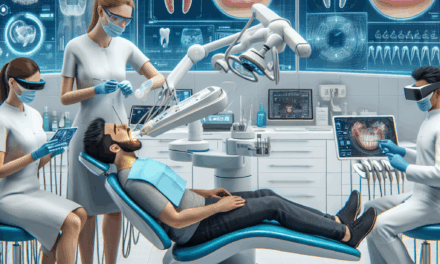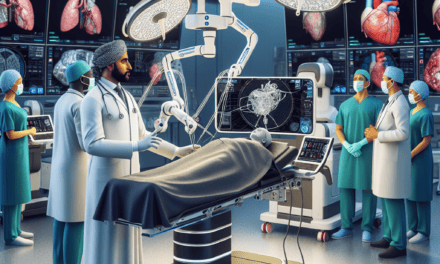RPM Transforms Care Models as Providers Accelerate Clinical Discoveries
Remote Patient Monitoring (RPM) has emerged as a transformative force in healthcare, reshaping care models and accelerating clinical discoveries. As healthcare providers increasingly adopt RPM technologies, they are not only enhancing patient care but also driving innovations in clinical research and treatment methodologies. This article delves into the multifaceted impact of RPM on healthcare, exploring its benefits, challenges, and future potential.
The Evolution of Remote Patient Monitoring
Remote Patient Monitoring has its roots in telemedicine, which began gaining traction in the late 20th century. However, the advent of advanced technologies such as wearable devices, mobile health applications, and cloud computing has propelled RPM into the mainstream. Today, RPM encompasses a wide range of tools and technologies that allow healthcare providers to monitor patients’ health data in real-time, regardless of their location.
Historically, RPM was primarily used for chronic disease management, particularly for conditions like diabetes, hypertension, and heart disease. However, its applications have expanded significantly. Now, RPM is utilized in various settings, including post-operative care, mental health monitoring, and even preventive health measures. The COVID-19 pandemic further accelerated the adoption of RPM, as healthcare systems sought to minimize in-person visits while ensuring continuous patient care.
Key Components of RPM
RPM systems typically consist of several key components:
- Wearable Devices: These include smartwatches, fitness trackers, and specialized medical devices that collect health data such as heart rate, blood pressure, and glucose levels.
- Mobile Applications: Apps that allow patients to input their health data, receive reminders for medication, and communicate with healthcare providers.
- Data Analytics: Advanced algorithms and machine learning techniques that analyze the collected data to identify trends and potential health issues.
- Telehealth Integration: The ability to connect patients with healthcare providers through video consultations, enhancing the RPM experience.
- Patient Engagement Tools: Features that encourage patients to take an active role in their health management, such as educational resources and community support.
As these components work together, they create a comprehensive RPM ecosystem that enhances patient care and facilitates clinical discoveries.
Enhancing Patient Engagement and Outcomes
One of the most significant benefits of RPM is its ability to enhance patient engagement. By providing patients with tools to monitor their health, RPM empowers them to take an active role in their care. This increased engagement can lead to improved health outcomes, as patients become more aware of their conditions and more motivated to adhere to treatment plans.
Studies have shown that RPM can lead to significant improvements in chronic disease management. For instance, a study published in the journal Telemedicine and e-Health found that patients with diabetes who used RPM technologies experienced a 1.2% reduction in HbA1c levels compared to those who received standard care. This reduction is clinically significant, as it can lower the risk of diabetes-related complications.
Case Study: RPM in Diabetes Management
A notable example of RPM’s impact on patient engagement and outcomes can be seen in the case of a large healthcare system that implemented an RPM program for diabetes management. The program involved equipping patients with continuous glucose monitors (CGMs) and a mobile app that allowed them to track their glucose levels in real-time.
Patients received personalized feedback from their healthcare team based on their glucose data, which helped them make informed decisions about their diet and medication. Over six months, the healthcare system reported a 30% reduction in hospital admissions related to diabetes complications among participants in the RPM program.
This case illustrates how RPM not only enhances patient engagement but also leads to tangible improvements in health outcomes. By providing patients with real-time data and support, healthcare providers can help them manage their conditions more effectively.
Accelerating Clinical Discoveries
RPM is not only transforming patient care but also accelerating clinical discoveries. The vast amounts of data generated by RPM technologies provide researchers with unprecedented insights into patient health and disease progression. This data can be leveraged to identify trends, develop new treatment protocols, and even discover new therapeutic targets.
For instance, the integration of RPM data into clinical trials has the potential to enhance the efficiency and effectiveness of research. Traditional clinical trials often face challenges related to patient recruitment, retention, and data collection. However, RPM can streamline these processes by enabling remote monitoring of trial participants and facilitating real-time data collection.
Case Study: RPM in Clinical Trials
A prominent example of RPM’s role in accelerating clinical discoveries can be seen in a recent clinical trial for a new heart failure medication. Researchers utilized RPM technologies to monitor participants’ vital signs and symptoms remotely. This approach allowed them to collect data more efficiently and reduce the burden on participants, who otherwise would have had to make frequent in-person visits.
The trial not only met its recruitment goals ahead of schedule but also provided researchers with rich data that led to new insights into the medication’s effects on heart function. As a result, the trial was able to conclude earlier than anticipated, expediting the drug’s approval process.
This case highlights how RPM can enhance the research landscape, enabling faster and more efficient clinical trials while also improving patient experiences.
Challenges and Considerations in RPM Implementation
Despite its numerous benefits, the implementation of RPM is not without challenges. Healthcare providers must navigate various obstacles to successfully integrate RPM into their care models. These challenges include technological barriers, data privacy concerns, and the need for adequate training and support for both patients and providers.
Technological Barriers
One of the primary challenges in RPM implementation is ensuring that both patients and providers have access to the necessary technology. While many patients own smartphones and wearable devices, not all have the technical skills or resources to utilize RPM tools effectively. Additionally, healthcare providers must invest in the infrastructure needed to support RPM, including data storage, analytics capabilities, and telehealth platforms.
To address these barriers, healthcare organizations can consider the following strategies:
- Providing Training: Offering training sessions for patients and providers can help ensure that everyone is comfortable using RPM technologies.
- Ensuring Accessibility: Organizations should strive to make RPM tools accessible to all patients, including those with limited technological skills or resources.
- Investing in Infrastructure: Healthcare providers must invest in the necessary infrastructure to support RPM, including secure data storage and analytics capabilities.
Data Privacy Concerns
Another significant challenge in RPM implementation is ensuring the privacy and security of patient data. As RPM technologies collect sensitive health information, healthcare providers must adhere to strict regulations regarding data protection. Patients may also have concerns about how their data is used and shared.
To mitigate these concerns, healthcare organizations should prioritize data security by implementing robust encryption protocols, conducting regular security audits, and being transparent with patients about data usage. Building trust with patients is essential for the successful adoption of RPM technologies.
The Future of RPM in Healthcare
The future of Remote Patient Monitoring is promising, with ongoing advancements in technology and an increasing recognition of its value in healthcare. As RPM continues to evolve, several trends are likely to shape its future landscape.
Integration with Artificial Intelligence
One of the most exciting developments in RPM is the integration of artificial intelligence (AI) and machine learning. These technologies can enhance data analytics capabilities, allowing healthcare providers to identify patterns and predict health outcomes more accurately. For example, AI algorithms can analyze RPM data to identify patients at risk of deterioration, enabling timely interventions.
As AI continues to advance, its integration into RPM systems will likely lead to more personalized and proactive care models. Healthcare providers will be able to tailor interventions based on individual patient data, improving overall health outcomes.
Expansion of RPM Applications
As healthcare providers become more familiar with RPM technologies, the applications of RPM are expected to expand beyond chronic disease management. Future applications may include:
- Mental Health Monitoring: RPM can be used to monitor mental health conditions, providing real-time data on patients’ moods and behaviors.
- Post-Operative Care: RPM can facilitate remote monitoring of patients recovering from surgery, reducing the need for in-person follow-ups.
- Preventive Health Measures: RPM can be utilized for preventive health screenings and early detection of potential health issues.
As these applications expand, RPM will play an increasingly vital role in comprehensive healthcare delivery.
Conclusion
Remote Patient Monitoring is transforming care models and accelerating clinical discoveries in healthcare. By enhancing patient engagement, improving health outcomes, and streamlining clinical research, RPM is reshaping the way healthcare is delivered. While challenges remain in its implementation, the future of RPM is bright, with ongoing advancements in technology and an expanding range of applications.
As healthcare providers continue to embrace RPM, they will not only improve patient care but also contribute to a more innovative and efficient healthcare system. The integration of RPM into everyday practice represents a significant step forward in the quest for better health outcomes and a more patient-centered approach to care.





